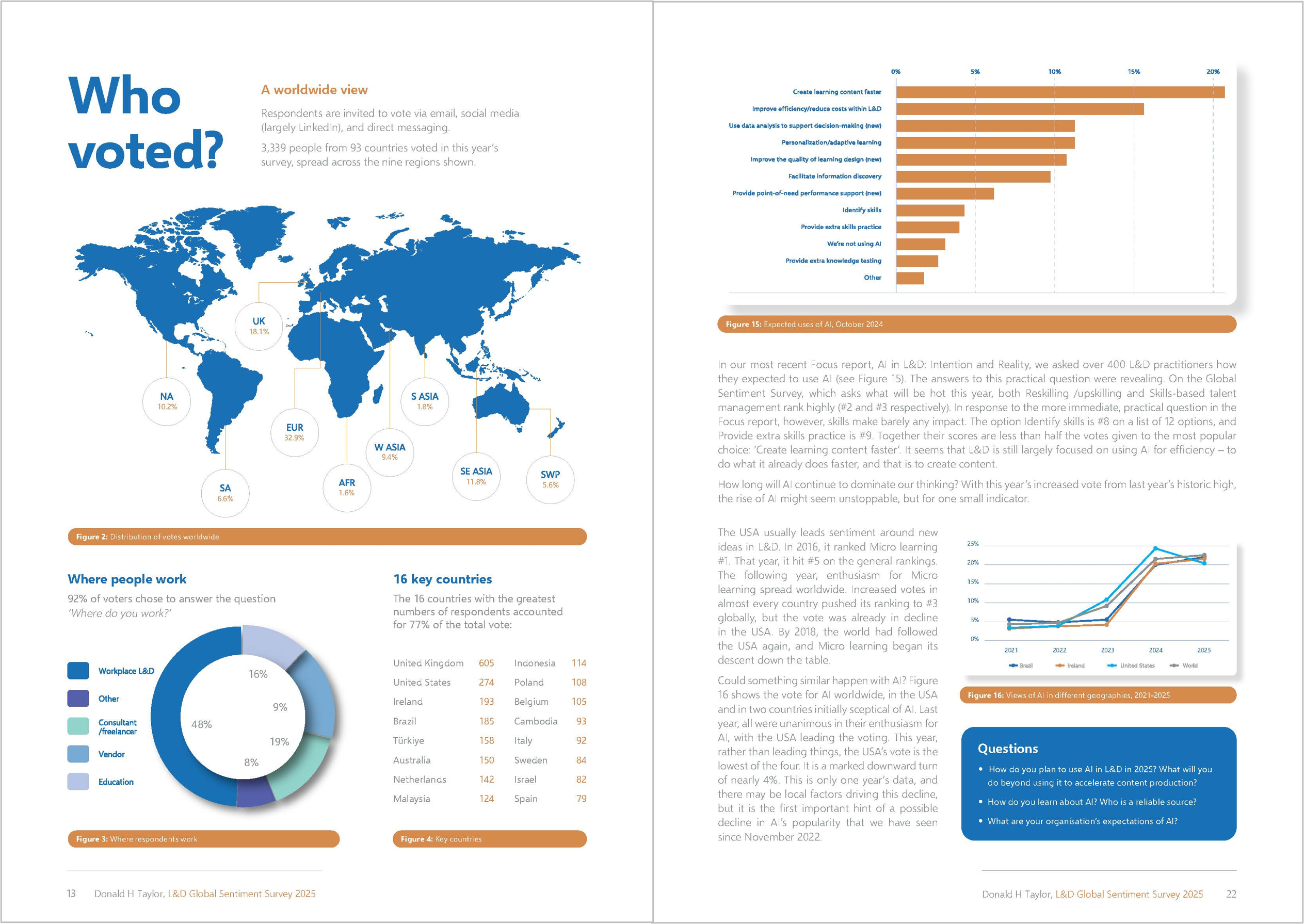Facilitation, tacit knowledge and L&D

When I started training in the mid ‘80s it would have sounded like science fiction. Now it’s a daily reality: four people share a video conversation with colleagues from around the world listening in.
At the end of May 2016, Jo Cook, Beverley Aylott, Sunder Ramachandran and I began Training Journal’s Week of Webinars discussing the current state of the Learning and Development industry. Joining us, via microphone and via text chat, were colleagues from around the world.
And over the course of our hour-long conversation, something happened. Something no longer extraordinary, but something which not long ago would quite likely have baffled and surprised us.
There was no script, just Jo Cook relaying the audience’s questions and adding. So far, so normal. The Greeks and Romans answered questions in front of audiences. The only thing new here was the technology.
But here’s the difference: the participants were not only asking questions. They were sharing observations, opinions, experiences and resources. And they were not only sharing these with the speakers, but with each other. The conversation on the virtual stage had triggered multiple other shared conversations, all taking place simultaneously via text.
This is new. A broadcast combined with simultaneous social activity. It’s a phenomenon I have observed over the past few years on the webinars I host for the Learning and Skills Group. For want of a better term, I call it social broadcasting, something that is made possible by technology, certainly, but also by attitudes to authority and information, and new habits of sharing.
In our world of instant information, anyone’s authority can be questioned, and so it should be – courteously and with patience. The other side of this, of course, must be a willingness to be questioned oneself, and to share information and resources that support a particular viewpoint. This is something we do readily, today, because we are used to it. Social broadcasting occurs not only on webinars, but also in conferences, where speakers and audiences – in the room and beyond it – share using a variety of back-channel tools, including Twitter. It happens at home on the sofa, when watching the Great British Bake Off, Eurovision and Match of the Day, when a wide community reflects via social media on what it is seeing. We barely notice it, but it is a new set of habits, it results in a rapid distribution of information and ideas, and it rests on an ease with sharing which did not exist before the advent of social media.
Unwittingly, then, in our Training Journal webinar discussing the future of L&D, the medium had become the message. L&D is moving from being the gatekeepers of information to being the facilitators of conversation. In every well-run webinar, as well as the speaker’s broadcast, a vast amount of tacit knowledge becomes useful, shareable and explicit in the chat area. The webinar format is incidental. It is the ease of sharing, and the value of what surfaces that matters.
As I say, this is not a phenomenon unique to L&D, nor even to work. It is something that is going to happen whether we are involved or not. Given that, L&D professionals must ask themselves some searching questions: how can we make the workplace sharing of information more effective, and curate and share the surfaced information more effectively? L&D’s role is changing, being master facilitators is a crucial part of it.
This originally ran as my column in the July 2016 edition of Training Journal



